The term "badlands" applies to areas of both North and South Dakota. We visited both and they are similar, but different. Based on what we saw, the Badlands National Park, which is in South Dakota, is more spectacular.
The bad lands name originated with the Native Americans who hunted here for millennia. The French picked up the name from them. Although spectacular, the area is hot and dry in the summer and cold and windy in the winter. When it rains, the soil becomes muddy and slick.
I have far too many pictures for one page, so I've divided them into "rocks" and "fauna & flora." Even so, many views were left out.
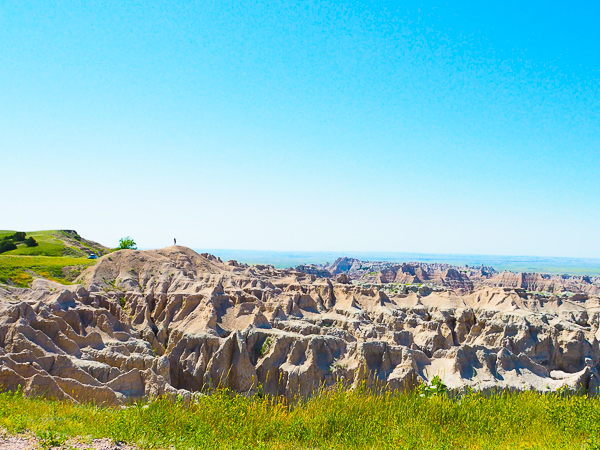
Our first stop was at the Pinnacles Overlook.
We were hampered somewhat by our schedule. The best time to visit the Badlands, same as the Grand Canyon, is sunrise and sunset. NOT mid-day on a cloudless day. The colors are washed out by the harsh light, so I've "enhanced" them here and there.
The tiny human standing on a high point toward the left of the image gives an idea of scale.
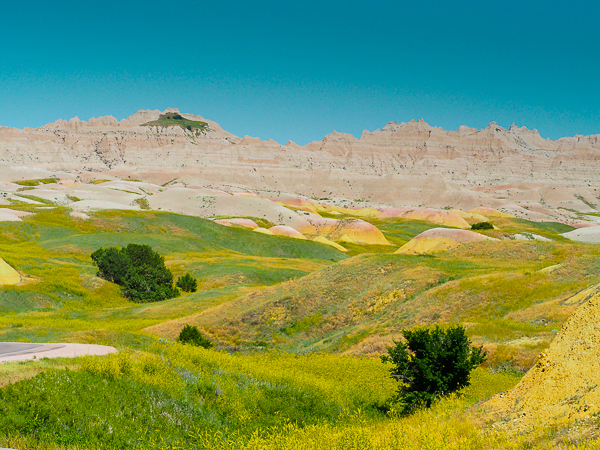
The Yellow Mounds overlook is aptly named.
This picture was taken from the car park. The rocks in this area are some of the oldest in the park.
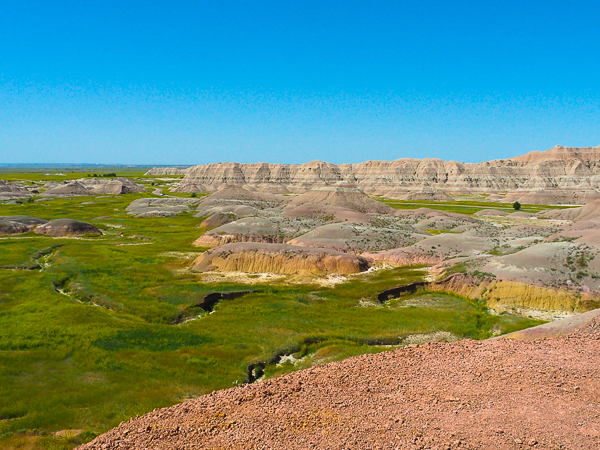
A scramble up from the car park opens up this vista on the opposite side of the road.
This is the Conata Basin, one of the places where endangered black-footed ferrets can be found. Unfortunately plague was confirmed in this area in 2024. Wherever we went on our trip we were warmed about giving prairie dog towns a wide berth.
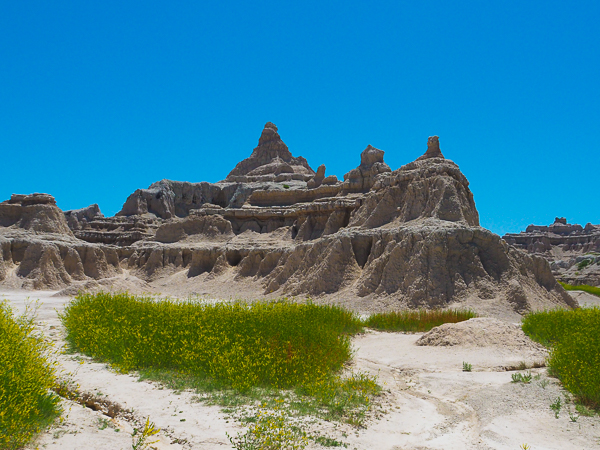
After lunch we visited an area called "doors and windows." Boardwalk trails led to gaps in the rock walls that opened onto panoramic views.
There had been recent rains and some of the gullies still retained water.
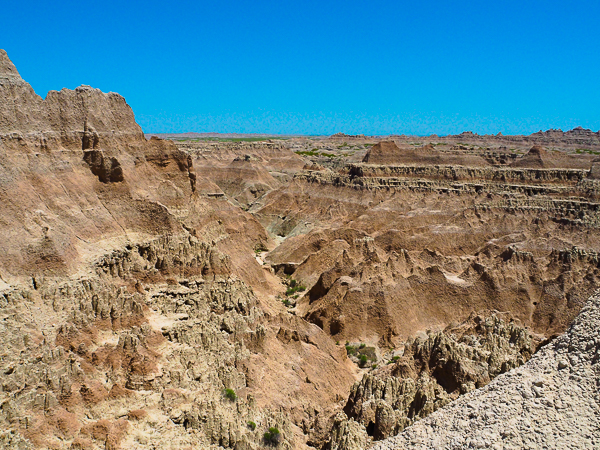
A scramble up to one of the "windows" revealed this canyon.
Hiking trails lead from the boardwalk sections into the canyons, but all of the caveats of backcountry hiking apply.
Click your "back" button to return to the previous page or click for our picture album.